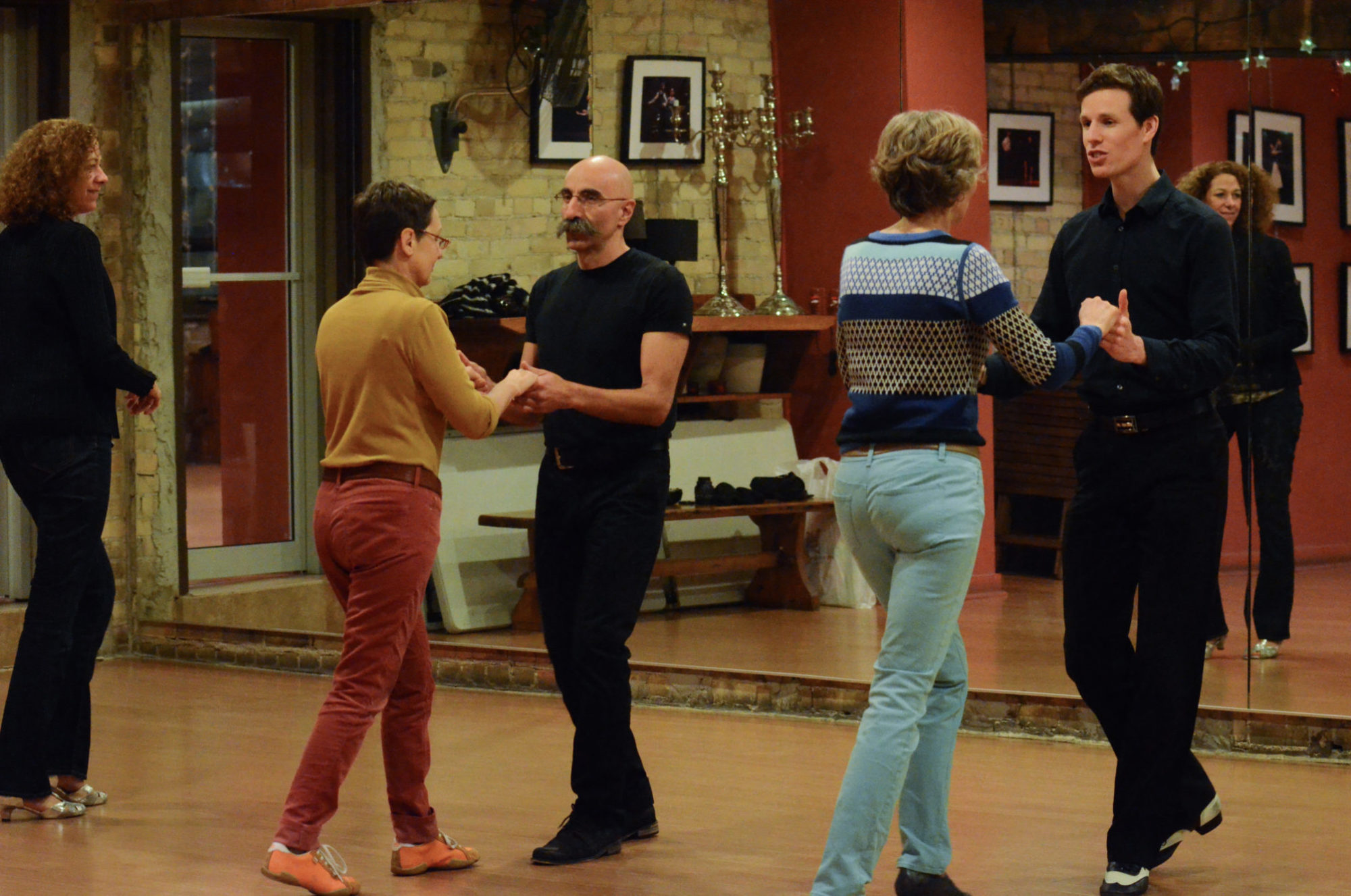‘Kids: They dance before they learn anything that isn’t music.’
- William Stafford
Thinking in dancing is a double-edged sword. On one hand, it helps us plan the next step, and interpret what we learn in a lesson. But too much thinking can stifle our body’s natural movement. You can tell if someone is dancing more in their mind then their body; their movements are stiff and robotic, and they seem unaware of their partner, or the music. Virtually all of us suffer from over-thinking sometimes, but we can counter it with the body awareness.
What is body awareness? It is the ability to stay in the present, connected with the music and your partner. It also means that the mind goes silent, because our thoughts are only occupied by the past or future. Consider: Even if you are cursing yourself for a recent misstep, your attention is still directed into the past. To dance on the cutting edge of NOW, we must remove most of our thought from dancing.
We all learned how to dance, spin, jump and roll, as children. As we grew older however, we lost touch with our bodies. We were trained to use our minds for everything - look before you leap, don’t make assumptions, if you plan to learn, learn to plan. This doesn’t mean our minds aren’t an important tool in our day-to-day lives. But when we start using it on the ever-changing dance floor, it only slows us down. The tool has overtaken the master.
Here’s just a few kinds of thinking that can distract us from a great social dance:
- Ruminating about a mistake
- Anticipating or guessing at the next pattern
- Thinking about the work-day
- Worrying about the opinions of others
- Trying to remember our technique
- Planning five or ten steps in advance
- Internally judging your partner, or nearby dancers
To increase our body awareness, we need to start trusting our body’s instincts again. Our body picks up on steps, technique, and usually music too, a lot faster than our brain does. This is why we usually dance better when trying a pattern or dance style for the first time: we allow ourselves to instinctually feel our way through the motions, at least temporarily. After a few repetitions however, our brain starts to reassert itself, and our dancing suffers until we’ve learned to make it automatic once more.
‘But how am I supposed to dance without thinking?’ you might be wondering. The answer is to build trust in our instincts, and to train our mind to avoid ‘clinging’ to the inevitable bumps, jolts, and missteps that occur. For leaders, there may be brief flashes of thought as they decide on what to do next, but even this is a spontaneous interaction with the body. The rest of our attention is directed on what we feel, in our connection with our partner, and in expressing the music as it arrives. When you have body awareness, the only dance step that matters, is the one you are making right now.
For many, the addiction to thinking can be too powerful to break simply by recognizing the importance of body awareness. Next week, we’ll take an objective look at where the destructive thought patterns that hurt our dancing come from, and how to eliminate them.
